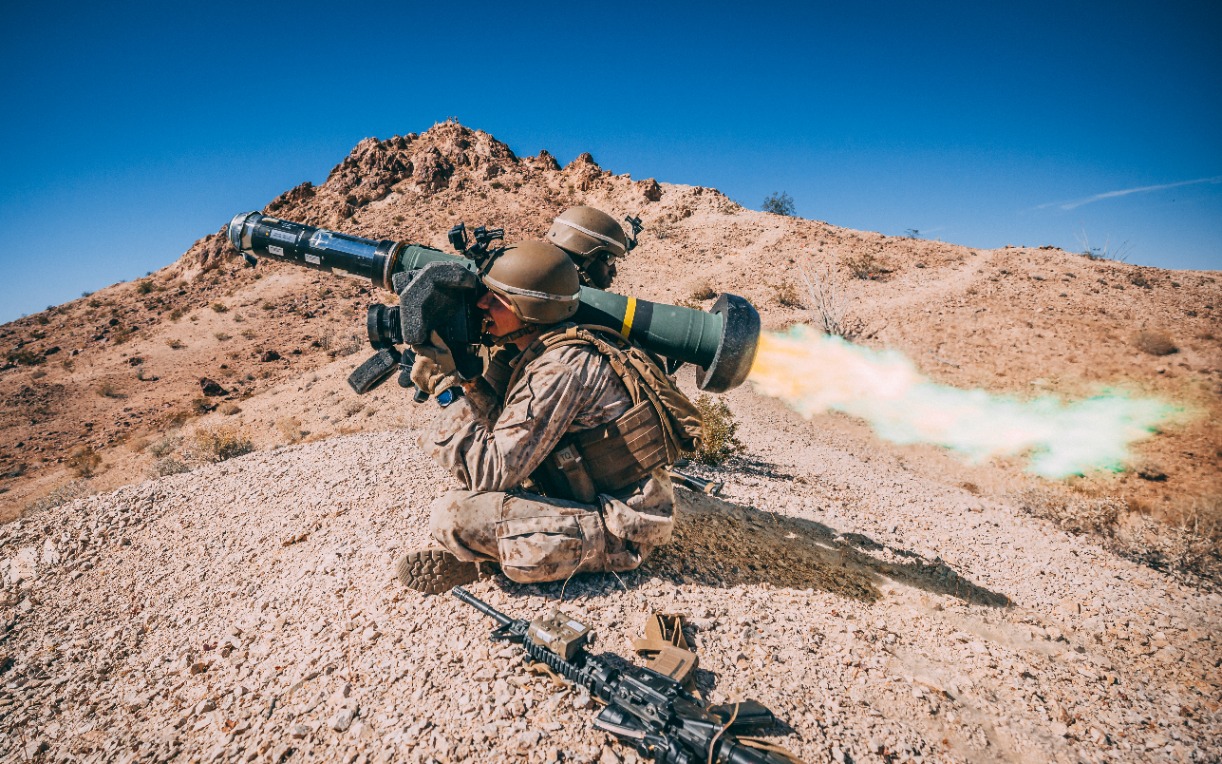More Javelin 'Tank-Killer' Missiles Are Headed Close to Russia Doorstep
Bulgaria is the latest NATO ally approved to purchase the FGM-148F Javelin anti-tank missile system, following a request for 218 launchers and related equipment in a deal valued at $114 million.
All You Need to Know: Bulgaria is the latest NATO ally approved to purchase the FGM-148F Javelin anti-tank missile system, following a request for 218 launchers and related equipment in a deal valued at $114 million.

-Developed by Lockheed Martin, the Javelin has been instrumental in Ukraine, proving highly effective in taking out Russian main battle tanks like the T-72.
-Bulgaria joins other Eastern European countries, including Poland and the Czech Republic, in bolstering its anti-tank capabilities.
-This acquisition highlights the growing importance of the Javelin system in modern warfare, offering a fire-and-forget feature that allows operators to shoot and take cover swiftly.
Latest NATO Ally To Receive Tank-Killing FGM-148F Javelins
It was just over 40 years ago that defense giant Lockheed Martin began the development of the Advanced Anti-Tank Weapons System – Medium (AAWS-M), later to be designated FGM-148 Javelin, a man-portable anti-tank system that officially entered service in 1996. Designed to counter Soviet and Warsaw Pact main battle tanks (MBTs) including the T-72, armored vehicles, and even fortified positions including bunkers, it has been employed to great success in Ukraine – more than living up to its potential as it has been used to destroy hundreds of Russian MBTs.
Whether the engineers at Lockheed Martin expected it to be so effective isn't known, but even if those who worked on its development saw the potential for its success, it is very doubtful they'd have ever conceived it would be adopted by nations that at the time were still members of the Warsaw Pact.
That has included the Czech Republic, Estonia and Lithuania (both formerly republics within the Soviet Union), and Poland – while Latvia and Romania are also on track to adopt the portable tank-killing rocket launcher.
Earlier this month, Bulgaria also received approval for a possible "Foreign Military Sale" from the U.S. State Department, after the Defense Security Cooperation Agency provided the required certification that notified Congressional lawmakers of the request from Sofia. Bulgaria had requested 218 of the launchers, as well as 107 Javelin Lightweight Command Launch Units (LWCLU).
The estimated total cost, which also includes Basic Skills Trainers (BST), Javelin Outdoor Trainers (JOT), Battery Coolant Units (BCUs), System Integration and Check Out (SICO), lifecycle support, manuals, support tools, and other training was estimated to have a total cost of $114.
"This proposed sale will support the foreign policy and national security objectives of the United States by helping to improve the security of a NATO Ally that is an important force for political and economic stability in Europe," the DSCA said in the contract notification. "The proposed sale will improve Bulgaria’s long-term defense capacity to defend its sovereignty and territorial integrity and to meet its national defense requirements. Bulgaria will have no difficulty absorbing this equipment into its armed forces."

Lockheed Martin and RTX Corporation were named as the joint prime contractors, with the work being completed in Orlando, Florida, and Tucson, Arizona.
"Implementation of this proposed sale will not require the assignment of U.S. Government or contractor representatives to Bulgaria," the DSCA added. "There will be no adverse impact on U.S. defense readiness as a result of this proposed sale."
According to international military analyst firm Janes, the announcement from the DSCA comes about eight months after the State Department announced a possible sale of the FGM-148F Javelin to Kosovo.
Getting to the Point of the Javelin
The FGM-148 Javelin isn't a one-off man-portable rocket launcher – like the AT4 or M72 LAW rocket – and instead consists of three components. These include the Launch Tube Assembly; the Command Launch Unit (CLU pronounced "clue"), the targeting component of the two-part system, which has three views to find, target, and fire the missile; and the actual missile.
It has proven to be a highly effective fire-and-forget platform that utilizes automatic infrared guidance, which allows the user to take cover and avoid counter-fire immediately after launch. By contrast, the wire-guided TOW required that operators stay put until the missile strikes, meaning they were in harm's way until the round hit the target. The Javelin allows the operator to "shoot and scoot" meaning to fire and then take cover before the tank even has time to react or return fire.
The launch motor also utilizes a conventional rocket propellant to eject the warhead from the launcher, yet it stops burning before the missile actually clears the tube. A flight motor is ignited only after it sufficiently clears the operator, resulting in very little back blast. For that reason, Russian tanks often don't even know that a Javelin missile was fired and is headed their way.
Tank crews literally wouldn't know what hit them!
Author Experience and Expertise: Peter Suciu
Peter Suciu is a Michigan-based writer. He has contributed to more than four dozen magazines, newspapers, and websites with over 3,200 published pieces over a twenty-year career in journalism. He regularly writes about military hardware, firearms history, cybersecurity, politics, and international affairs. Peter is also a Contributing Writer for Forbes and Clearance Jobs. You can follow him on Twitter: @PeterSuciu. You can email the author: [email protected].
Image Credit: Creative Commons and/or Shutterstock.


